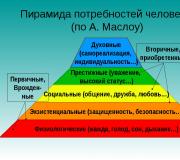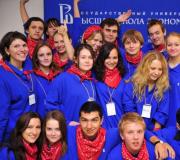American artist watercolor landscape. Modern Russian watercolor
Among the winners International competition There were two representatives of Russia as watercolor artists in 2014, whose works we will look at today.
Elena Bazanova is a world-famous artist who works in watercolor technique.
Born in 1968 in the town of Slantsy, Leningrad region.
Graduated from the St. Petersburg Academic Art Lyceum named after. B.V. Ioganson and State Academy painting, sculpture and architecture named after I.E. Repin (book graphics workshop).
Since 1989, he has been actively working with publishing houses in St. Petersburg, and since 1996 he has been illustrating publications for children.
Since 1995 - member of the Union of Artists of Russia.
Since 2006 - member of the St. Petersburg Watercolor Society.
Works are in galleries and private collections in Russia, Germany, USA, France, England, Sweden, Iceland, Finland, the Netherlands, and Kazakhstan.
Works were submitted to the competition.

Winter. Apples.
Now Elena is a member of the St. Petersburg Watercolor Society, regularly participates in seasonal exhibitions of the Union of Artists, and actively exhibits both in Russia and abroad (in the UK, Germany, USA, Ireland). She has seven personal exhibitions and participation in more than fifty collective exhibitions in Russia.
Since 2006 - member of the St. Petersburg Watercolor Society.
Three apples.
Elena Bazanova talks about her work like this.
— Why did you choose watercolor?
It seems to me that I feel this material, this allows me to reveal its features in very complex painting tasks. It is precisely this tension in work that seems attractive to me; controlling the elements of water and paint is the most exciting and intriguing thing in watercolor painting.

Bouquet of strawberries.

Still life with corn
What other techniques do you work with?
Thanks to the education I received, I have the most different techniques. Of course, I don’t use them all all the time; it’s impossible to embrace the immensity, unfortunately. I like to make drawings soft materials, when illustrating books I often use ink, pen and colored pencils. 
Daylilies.
Three apples.

Sunflowers

Climatis
— What is your favorite genre: still life? What about landscapes and portraits?
Yes, Lately I work a lot in the still life genre. I also paint animal portraits. I really want to do it new series landscapes and work with portraits of people. So my plans are to expand the boundaries of the genre.

Sketch with strawberries.
Still life
You illustrated " Alice in Wonderland With". These works are not at all similar to your still lifes.
I do not consider myself one of the artists who constantly impose their style on the depicted topic or illustrated book. I move along the path of creating an image based on the essence of what is the subject of the image or illustration. This gives rise to different plastic solutions. The illustration should not create a barrier to the perception of the text, especially in a children's book.

My work experience in book illustration big enough. Starting with student projects, I tried to achieve maximum unity of illustrations with the text and the author’s idea.


Still life with red currants.
Peas. 
Still life with peaches

Cherry 

Dusya
:

Dmitry Rodzin born in 1969 in Krasnodar.
In 1988 he graduated from the Krasnodar Art School.
1991-1997 - studied at Russian Academy painting, sculpture and architecture in the workshop historical painting (graduate work- "Expelling the traders from the temple").
Among the works are historical and genre compositions, portraits, landscapes, still lifes, interior design, book graphics.
Participant of exhibitions since 1993
The personal exhibition “After Tradition” took place in 2002 at the branch of the State Central Theater Theater named after. A.A. Bakhrushina (Moscow).
Currently lives and works in Moscow.
The work was presented at the competition.

Summer. Ksenia and Sonechka.

Live lilies, dry roses and netsuke

Sonya.

Rest.
Children's images are one of Dmitry's favorite themes in his work. His paintings show thoughts and emotions little man, his growing up, the beginning of learning about the world. In a number of watercolors the artist develops the theme of reflections. They create a double illusion: the illusion of three-dimensionality in a two-dimensional mirror and the illusion of three-dimensionality on a two-dimensional sheet of paper.

Autumn

Curiosity.

Windows

Cross.

Birthday

Petunia.

Just a sketch.

From shadow to light.

Izmailovsky Park. February

Arbat.

Chernigovsky lane.
Dmitry Rodzin works a lot in the genre monumental painting. His paintings are, in particular, in the Presidential residence Russian Federation, the Reception House of the President of the Russian Federation, the residence of the Prime Minister of the Russian Federation and the Holy Trinity Seraphim-Diveevsky Convent.
Sources.
http://cleargallery.ru/gallery/open/aid-223
Watercolor - (from French aquarelle - water, from Latin aqua - water) paint for painting. It consists of finely ground pigment and easily water-soluble adhesives of plant origin - gum arabic and dextrin. Honey, sugar and glycerin retain moisture.
Watercolor is light, transparent, and at the same time complex. Does not tolerate correction. This paint has been known since ancient times. They were used in ancient Egypt, ancient China and in the countries of the ancient world. Watercolor needs special, porous paper. It was invented in China. The paint is easily absorbed into it. But the difficulty lies in transparency - you cannot cover one color with another - they will mix. It is impossible to correct the mistake, except perhaps to beat the spot that accidentally appeared. There are “wet brush” watercolors and “dry brush” watercolors. I love the first appointment. It is also called “a la prima”. It is lighter, more transparent.
In Europe, watercolor painting came into use later than other types of painting. One of the Renaissance artists who achieved great success in watercolor painting was Albrecht Dürer. An example of this is his work “The Hare”.
 Albrecht Durer (1471-1528) Hare
Albrecht Durer (1471-1528) Hare
 Albrecht Durer (1471-1528) Primrose vulgaris, 1503. Washington, National Gallery Arts
Albrecht Durer (1471-1528) Primrose vulgaris, 1503. Washington, National Gallery Arts
In the 18th-19th centuries, thanks to Thomas Gurtin and Joseph Turner, watercolor became one of the most important types of English painting.
 Thomas Girtin English artist(1775-1802) Ruins of Savoy Castle
Thomas Girtin English artist(1775-1802) Ruins of Savoy Castle
Thomas Guertin was a young artist who died at the age of 27, but he is rightly called an outstanding artist. He very quickly developed his own style: sweeping aside some old canons, removing what was limited in the drawing, he began to refuse to develop foreground, sought to capture an open space, striving for panoramicness.
 Turner. Kirkby Lonsdale church courtyard
Turner. Kirkby Lonsdale church courtyard
The watercolorist also constantly improved his technique and studied the nature of the movement of water and air. By the beginning of the 19th century, in his watercolors he achieved the power and expressiveness usually inherent in oil painting. By discarding unnecessary detail, he created new type landscape through which the artist revealed his memories and experiences.
Innovations of Gurtin, who began to use watercolors for large-format paintings, and Turner, who significantly enriched the arsenal techniques watercolorist, brought to life the further rise of English watercolor in the work of landscape artists.
The English tradition of watercolor had a strong influence on Russian artists, especially those associated with the Imperial Academy of Arts, located in the capital of the empire - St. Petersburg.
The first name in the chronicle of Russian watercolors is Petr Fedorovich Sokolov.
He painted portraits of his contemporaries.
 Watercolor painting in St. Petersburg and Russia reached an exceptional peak in last decades XIX and first two decades of the XX century. At a time when there were no photographs yet, speed of execution, a minimum number of tedious posing sessions, airiness of color - all this was needed Russian society. And therefore, it was watercolor that enjoyed success in the upper and middle layers.
Watercolor painting in St. Petersburg and Russia reached an exceptional peak in last decades XIX and first two decades of the XX century. At a time when there were no photographs yet, speed of execution, a minimum number of tedious posing sessions, airiness of color - all this was needed Russian society. And therefore, it was watercolor that enjoyed success in the upper and middle layers.
 Eduard Petrovich Gau. Gatchina Palace LOWER THRONE HALL. 1877
Eduard Petrovich Gau. Gatchina Palace LOWER THRONE HALL. 1877
Such painters as Ilya Repin, Mikhail Vrubel, Valentin Serov, Ivan Bilibin brought their original tribute to the art of watercolor.

 Vrubel
Vrubel
 V. Serov Portrait of I. Repin
V. Serov Portrait of I. Repin
 Ivan Yakovlevich Bilibin (1876-1942). On the river bank. Pencil, watercolor
Ivan Yakovlevich Bilibin (1876-1942). On the river bank. Pencil, watercolor
An important stage in the development of Russian watercolors was the organization in 1887 of the “Society of Russian Watercolorists,” which arose from a circle of watercolorists. Regular watercolor exhibitions and the creation of the “Society of Russian Watercolorists” (1887) contributed to the widespread dissemination of the technique and increased its status. The Society’s program did not have an ideological orientation; representatives of the Society coexisted peacefully among its members different directions united by a passion for the art of watercolor. A. N. Benois was elected its first chairman. The society was active exhibition activities, having spent 1896-1918. thirty-eight exhibitions. Its members were A.K. Beggrov, Albert Benois, P.D. Buchkin, N.N. Karazin, M.P. Klodt, L.F. Logario, A.I. Meshchersky, E.D. Polenova, A. P. Sokolov, P. P. Sokolov and others.
 ALEXANDER BEGGROV Galera. Tver. 1867.
ALEXANDER BEGGROV Galera. Tver. 1867.
The task of preserving and transmitting the traditions of the watercolor school early XIX century and preparing the ground for a new rise in watercolor, the “Society of Russian Watercolorists” undoubtedly accomplished. Watercolor again began to be perceived as independent, possessing own language region visual arts. Many members of the Society became teachers for the next generation of artists.
Watercolor painting also fascinated members of the World of Art association. Alexandra Benois(1870-1960), Lev Bakst (1866-1924), Ivan Bilibin (1876-1942), Konstantin Somov (1869-1939), Anna Ostroumova-Lebedeva (1871-1955). Watercolors were owned by the poet Maximilian Voloshin (1877-1932), whose drawings overlapped with his poetic works.
 Lev Samoilovich Bakst. Dancer from the ballet Firebird. 1910. Watercolor.
Lev Samoilovich Bakst. Dancer from the ballet Firebird. 1910. Watercolor.
 Ivan Bilibin
Ivan Bilibin
 K. Somov. Bathers. 1904. Paper, watercolor.
K. Somov. Bathers. 1904. Paper, watercolor.
 Alexander Palace in Detskoye Selo (watercolor) P A Ostroymov-Lebedev
Alexander Palace in Detskoye Selo (watercolor) P A Ostroymov-Lebedev
 Voloshin
Voloshin
Among the largest watercolor masters of the 20th century are N. A. Tyrsa, S. V. Gerasimov, A. A. Deineka, S. E. Zakharov, M. A. Zubreeva, A. S. Vedernikov, G. S. Vereisky, P. D. Buchkin, V. M. Konashevich, N. F. Lapshin, V. V. Lebedev, G. K. Malysh, A. N. Samokhvalov, S. I. Pustovoitov, V. A. Vetrogonsky, V. S. Klimashin, V.K. Teterin, A.I. Fonvizin and others.
 Tyrsa N.A. Portrait of Anna Akhmatova. 1928 Paper, black watercolor
Tyrsa N.A. Portrait of Anna Akhmatova. 1928 Paper, black watercolor
 A.A.Deineka
A.A.Deineka
Date of publication: 12/23/2016
Available in watercolor technique something special - fragile charm, lightness and weightlessness, the ability to surprisingly accurately convey the swiftness and fleetingness of the moment. Modern painters love watercolors. This technique is ideal for a dynamic, rapidly changing world before our eyes. In this review, we offer you a selection of the most famous watercolor artists who have achieved great heights in the art of watercolor and have gained worldwide popularity.
The most famous Australian artist working in watercolors. There is a museum in Zagreb named after him. The fact is that the artist was born in Croatia (in 1952), but at the age of 18 he emigrated to Australia with his family.
He studied industrial design at the University of Melbourne and later received his first awards and worldwide recognition. Croats are very proud of their famous countryman. In many art stores in Europe you can find brushes marked with his name for sale.
The secret of the artist’s success, by his own admission, is that he never makes paintings for sale, but creates exclusively for his own pleasure. D. Zbukvich's works can be seen in leading galleries around the world (in the USA, Great Britain, Australia, China).
His trademark is “Z” (the first letter of his last name). He teaches his students freedom, and compares watercolors to a wild, unbridled horse that can never truly be tamed. He confesses his love for her as the most beloved woman, and this love has lasted for 40 years.
The artist does not like pure black, saying that black is not a color, but its absence. Favorite theme: seascape and city views. One of the most unusual watercolors, which the master created, is written with just one paint - and this paint is instant coffee.
This artist just loves to write beautiful women and small children surrounded sunlight. His paintings are sensual, sometimes overtly sexual, full of harmony and very realistic.
Sometimes they resemble skillful photographs. He loves to paint women against the backdrop of water landscapes; the artist makes the water element especially realistic.
Steve Hanks was born in 1949 in California and fell in love with the ocean since childhood, because he spent quite a lot of time on its coast. Graduated with honors from the San Francisco Art Academy.
The artist calls his own style “ emotional realism" One of the 10 most famous American artists. He says to himself that he paints people, but not portraits.
He loves to write sunlight, which is one of the main characters his watercolors. At first, the artist tried to work with different techniques - oil, acrylic. But later he was forced to switch to working only with watercolors, as he was allergic to paints.
Eventually, he became so skilled at watercolor painting that he made the technique very similar to oil painting.
Born in 1953 in Ohio. Studied painting in Philadelphia in art school. This artist's specialty is portraits.
She draws amazing watercolor portraits the most different people- poor people, workers, children, old women and old men, beautiful African-American girls in flowering, sun-drenched meadows.
A whole gallery of faces modern America. Very bright, rich and sunny watercolors, full deep meaning. They depict people in the most ordinary situations busy with everyday activities.
The artist considers the ability to accurately convey emotions to be the main thing in her work. Simply masterfully copying things and people is not enough.
The artist works in two techniques – oil and watercolor. It was watercolor that brought her fame and recognition around the world. Mary White also successfully illustrates children's books.
He is called a French realist. The artist was born in 1962 in Paris. IN currently works as an illustrator in one of the publishing houses. He received an education in the field of decorative and applied arts.
He paints exclusively in watercolors, using his own technique of multi-layer paint application, due to which he achieves incredible realism in his work. Likes to work on individual accents.
Careful elaboration of details is the artist’s favorite technique, his trademark. Favorite theme: cityscape. The artist loves to paint his native Paris and Venice. His watercolors are imbued with romanticism and charm. He considers Eugene Delacroix to be his teacher in painting.
So, some time ago we had a conversation about the perception of paintings in isolation from the name of the artist, and everything that stands behind the name. You can read about the beginning here
Today I will tell you who is who.
General conclusions From your comments and the survey of my friends, the quality level of the picture is immediately visible. Some madness or strangeness too, but very often people are confused whether this is a sign contemporary art, or just something incomprehensible... It also turned out to be difficult to distinguish between a Russian, Chinese, and European artist. Only a few guessed correctly, and even then, mainly only because they recognized the authors of the paintings.
Watercolor No. 1
English artist - William Turner (1775-1851)
He is awesome.
Each of his paintings is worth tens of millions of pounds. Be sure to look at his watercolors, but not on the Internet, but preferably at least in paper reproductions
Watercolor No. 2
St. Petersburg watercolorist - Sergey Temerev.
His journal sergestus
I found it by accident when I was looking on LiveJournal for those who paint with watercolors. I really like his paintings - and seascapes, and very unusual still lifes. I dream of attending a master class one day :)) 
Watercolor No. 3
Konstantin Kuzema. Contemporary St. Petersburg artist. 100 best watercolor painters in the world and all that :) They talk a lot about him now, especially those who are learning to draw.
A site where you can view other works or read useful articles about technology http://kuzema.my1.ru
But personally, I am deeply indifferent to his paintings. Doesn't touch anything. 
Watercolor No. 4
Author: Joseph Branko Zbukvic. Born in 1952 in Croatia. Later he moved to Australia.
One of the most recognized watercolorists in the world. His paintings and technique are simply amazing. You can write his name in Google or Yandex and enjoy :) 
Watercolor No. 5
This is my three-minute sketch for this last watercolor: 
Where is the sketch and where is the watercolor?:) I just wanted to check something, and I figured out the composition while I was drawing with my daughter. Although the most popular answer was that this particular artist is from China :) Here they are, my eastern roots :))))) This work is completely wrong, because all watercolor paint I mixed it with white to check how it would affect the smudges.
Watercolor No. 6
Konstantin Sterkhov.
He is interesting because he maintains an extremely informative blog about watercolor artists, interviews them without reference to language and geographic barriers. Lives in St. Petersburg, but sometimes gives master classes in Moscow.
Blog http://sterkhovart.blogspot.ru/
Facebook page
A cure for those who are tired of trash and fuss. In a world where tons of information garbage fall on us every day, sometimes you really want to give up everything, take a deep breath and fix your gaze on something calm, not causing any irritation or discomfort. We believe that best vacation for the mind and vision it is an immersion in the world of art. In this review, we have collected works by watercolor artists that will fill you with silence and become a sip. fresh air on a hot city day.
Travel to Paris with Thierry Duval


 Paris-born artist Thierry Duval has traveled extensively. Hence the presence of entire series of paintings “based on geography.” Nevertheless, Paris was and remains the author’s favorite place. The lion's share of works is dedicated specifically to the city of lovers. Duval paints exclusively in watercolors. At the same time, he has his own technique of multi-layer paint application, which allows him to create paintings with almost hyper-realistic detail.
Paris-born artist Thierry Duval has traveled extensively. Hence the presence of entire series of paintings “based on geography.” Nevertheless, Paris was and remains the author’s favorite place. The lion's share of works is dedicated specifically to the city of lovers. Duval paints exclusively in watercolors. At the same time, he has his own technique of multi-layer paint application, which allows him to create paintings with almost hyper-realistic detail. Hot Afternoon Kanta Harusaki



 Kanta Harusaki is a Japanese watercolorist, born in Kumamoto, who began working in watercolors at the age of 32. Harusaki likes to write using a wet brush, but keeping the drawing straight. He knows how to skillfully and reliably convey the most transparent light color, as well as light and space. Viewers admire the artist’s ability to convey clear contours of highlights and foliage, combining this with the “wet” technique.
Kanta Harusaki is a Japanese watercolorist, born in Kumamoto, who began working in watercolors at the age of 32. Harusaki likes to write using a wet brush, but keeping the drawing straight. He knows how to skillfully and reliably convey the most transparent light color, as well as light and space. Viewers admire the artist’s ability to convey clear contours of highlights and foliage, combining this with the “wet” technique. Living Water by David Drummond



 David Drummond - American artist, fell in love with the landscape of Powell Reservoir 20 years ago. Now he never tires of exploring every corner of this amazing place and capture it using watercolors. Drummond is interested in different states of water, the “mood” of nature and changes in it. As the holder of a degree in physics, Drummond approaches creativity with all scientific responsibility, which is why his watercolors seem so alive and realistic.
David Drummond - American artist, fell in love with the landscape of Powell Reservoir 20 years ago. Now he never tires of exploring every corner of this amazing place and capture it using watercolors. Drummond is interested in different states of water, the “mood” of nature and changes in it. As the holder of a degree in physics, Drummond approaches creativity with all scientific responsibility, which is why his watercolors seem so alive and realistic. Country morning by Christian Granju



 Frenchman Christian Graniou often depicts provincial landscapes in his paintings. Despite the fact that detailed drawing does not attract him, and the light is distributed throughout the entire space, the artist’s works evoke a feeling of spaciousness and airiness.
Frenchman Christian Graniou often depicts provincial landscapes in his paintings. Despite the fact that detailed drawing does not attract him, and the light is distributed throughout the entire space, the artist’s works evoke a feeling of spaciousness and airiness. Evening Calm by Joseph Zbukvic



 Today, Croatian-born Australian Joseph Zbukvic is considered one of the pillars watercolor drawing worldwide. The artist fell in love with watercolor literally from the first stroke; he was struck by the untamed nature and individuality of this technique. He thinks she lives own life. It cannot be studied, there is no way to control the behavior of watercolor. Just ride around like a wild horse. And every day again.
Today, Croatian-born Australian Joseph Zbukvic is considered one of the pillars watercolor drawing worldwide. The artist fell in love with watercolor literally from the first stroke; he was struck by the untamed nature and individuality of this technique. He thinks she lives own life. It cannot be studied, there is no way to control the behavior of watercolor. Just ride around like a wild horse. And every day again.



